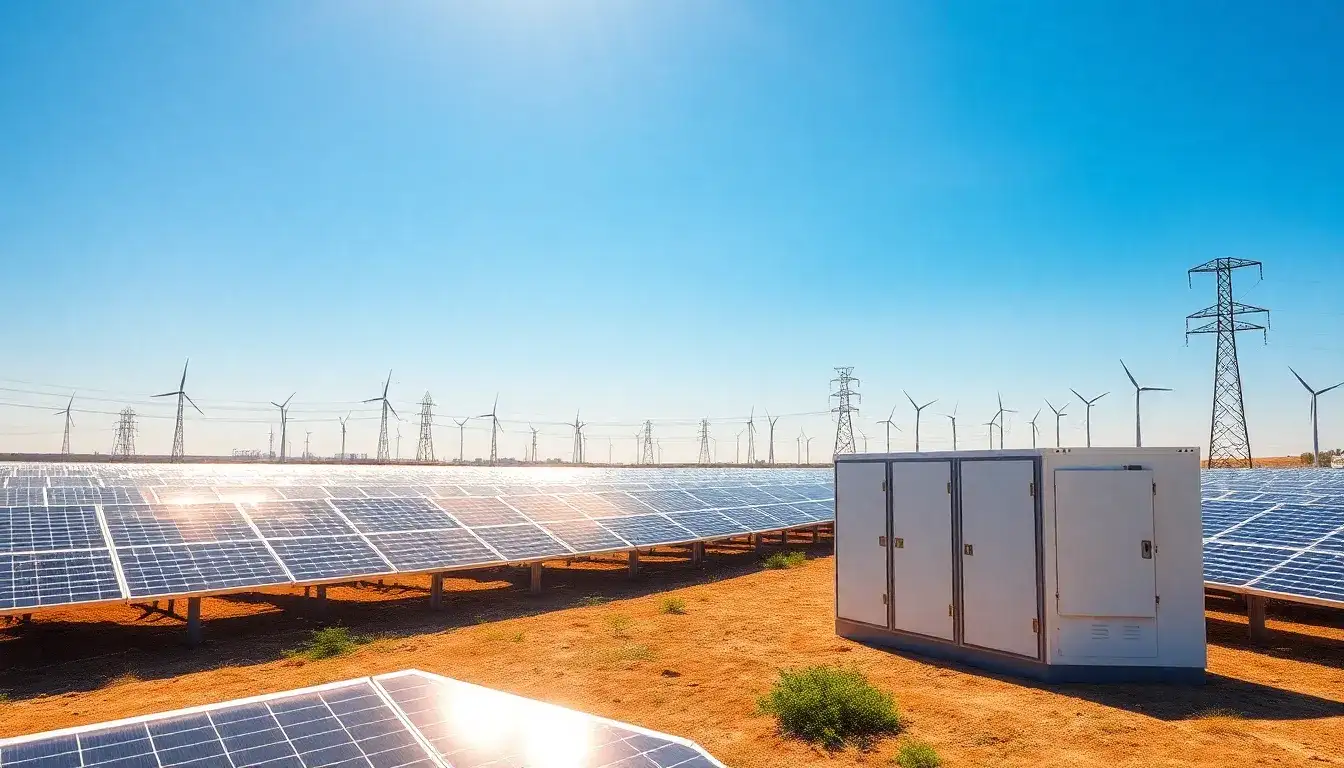
“`markdown
We anticipate that in 2025, the U.S. power grid will see the addition of 63 gigawatts (GW) of new utility-scale electric-generating capacity, according to our latest Preliminary Monthly Electric Generator Inventory report. This figure represents an increase of nearly 30% compared to 2024, which saw the installation of 48.6 GW—the largest capacity addition in a single year since 2002. Notably, solar and battery storage are projected to contribute to 81% of these new capacity additions, with solar alone accounting for over 50% of the increase.
Solar Power
In 2024, a record 30 GW of utility-scale solar capacity was added to the U.S. grid, making up 61% of the total capacity added that year. We expect this upward trend to continue in 2025, with an estimated addition of 32.5 GW of new utility-scale solar capacity. Texas (11.6 GW) and California (2.9 GW) are projected to account for nearly half of the new solar capacity in 2025. Additionally, five other states—Indiana, Arizona, Michigan, Florida, and New York—are expected to each contribute more than 1 GW, collectively adding 7.8 GW of planned solar capacity.
Battery Storage
In 2025, the growth in battery storage capacity is set to break records, with an anticipated 18.2 GW of utility-scale battery storage to be integrated into the grid. The U.S. already experienced significant growth in battery storage in 2024, with 10.3 GW added. This expansion underscores the crucial role of battery storage in conjunction with renewable energy, as it helps balance supply and demand while enhancing grid stability. It is important to note that energy storage systems do not generate electricity; they store electricity produced by generators or the electric grid, categorizing them as secondary sources of electricity.
Wind Energy
We expect that 7.7 GW of wind capacity will be added to the U.S. grid in 2025, a rise from the 5.1 GW added in the previous year, which was the lowest since 2014. Texas, Wyoming, and Massachusetts are projected to contribute nearly half of the new wind capacity. Additionally, two significant offshore wind projects are anticipated to come online this year: the 800-megawatt (MW) Vineyard Wind 1 in Massachusetts and the 715-MW Revolution Wind in Rhode Island.
Natural Gas
Planned developments for 2025 include 4.4 GW of new natural gas-fired capacity in the United States, with 50% coming from simple-cycle combustion turbines and 36% from combined-cycle power blocks. The states of Utah, Louisiana, Nebraska, North Dakota, and Tennessee are expected to account for over 70% of these natural gas additions. The largest natural gas plants anticipated to be operational in 2025 are the 840-MW Intermountain Power Project in Utah and the 678.7-MW Magnolia Power in Louisiana. Notably, the capacity additions at the Intermountain Power Project will replace 1,800 MW of coal-fired capacity, which is scheduled for retirement in July.
Data Source: U.S. Energy Information Administration, Preliminary Monthly Electric Generator Inventory, December 2024
Note: MW = megawatts
“`
Original article by NenPower, If reposted, please credit the source: https://nenpower.com/blog/solar-and-battery-storage-set-to-dominate-u-s-energy-capacity-additions-in-2025/


